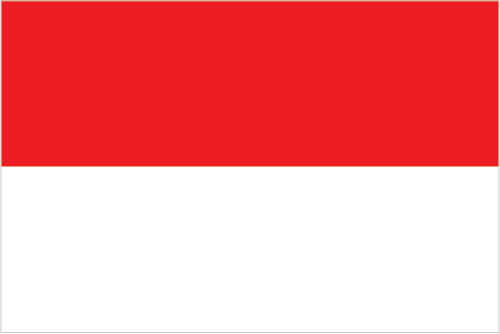Capital City: Jakarta
Population: 253,609,643 (July 2014 est)
Currency: Indonesian Rupiah (IDR)
Land Area: 1,811,569 sq km. Archipelago of 17,508 islands, some 6,000 of which are inhabited (Indonesia is the world’s largest country comprised solely of islands); straddles equator; strategic location astride or along major sea lanes from Indian Ocean to Pacific Ocean.
Dominant Religions: Muslim 87.2%, Christian 7%, Roman Catholic 2.9%, Hindu 1.7%, other 0.9% (includes Buddhist and Confucian), unspecified 0.4% (2010 est)
Land Boundaries: Timor-Leste 228 km, Malaysia 1,782 km, Papua New Guinea 820 km
Location: Southeastern Asia, archipelago between the Indian Ocean and the Pacific Ocean
Climate: Tropical; hot, humid; more moderate in highlands
Terrain: Mostly coastal lowlands; larger islands have interior mountains
Visa: Foreign nationals holding an Australian Passport arriving by land border must obtain a visa prior to entry. Indonesia has a consulate in Dili. VOA is only available for arrival at an airport
Entry Point: Atambua (West Timor)
Exit Point: Medan (Sumatera). Details to be confirmed
Cuisine: With 17,000 islands to choose from, Indonesian food is an umbrella term covering a vast variety of regional cuisines found across the nation, but if used without further qualifiers the term tends to mean the food originally from the central and eastern parts of the main island Java. Now widely available throughout the archipelago, Javanese cuisine consists of an array of simply seasoned dishes, the predominant flavorings the Javanese favor being peanuts, chillies and sugar

